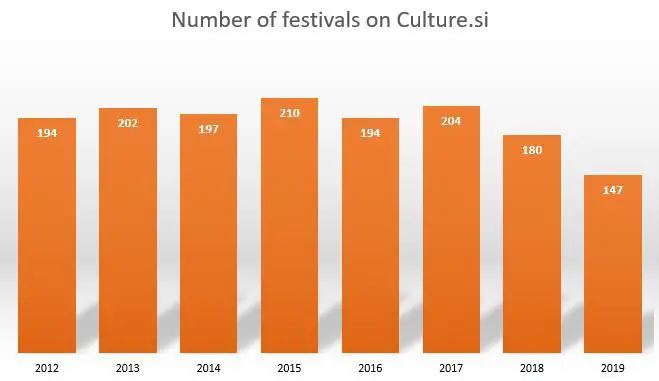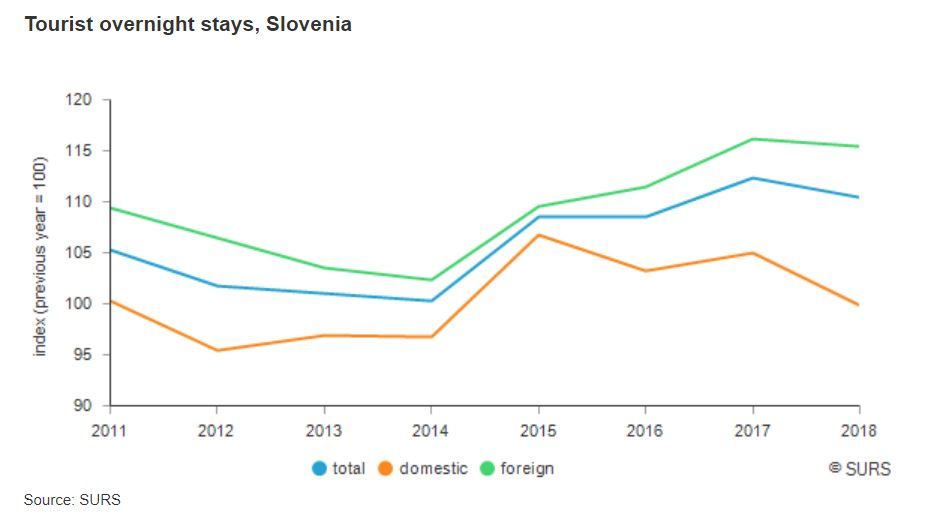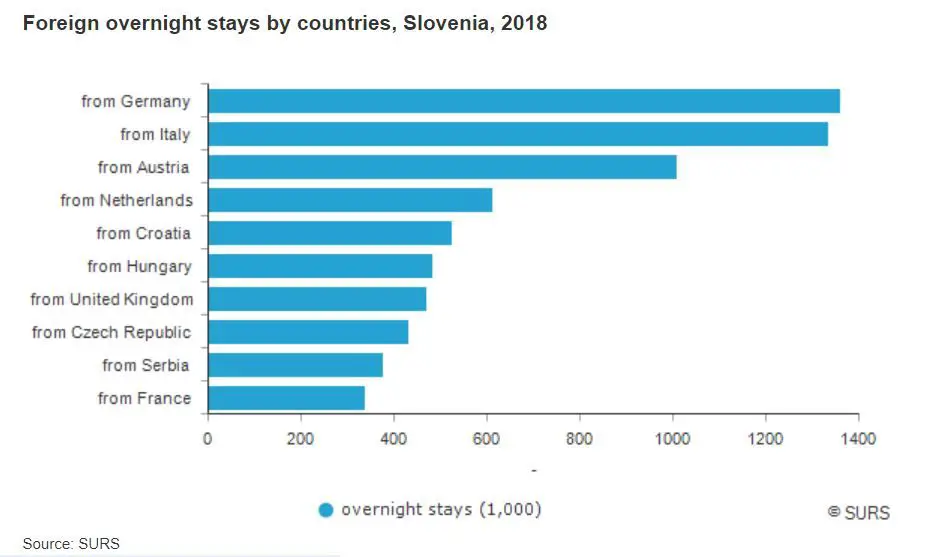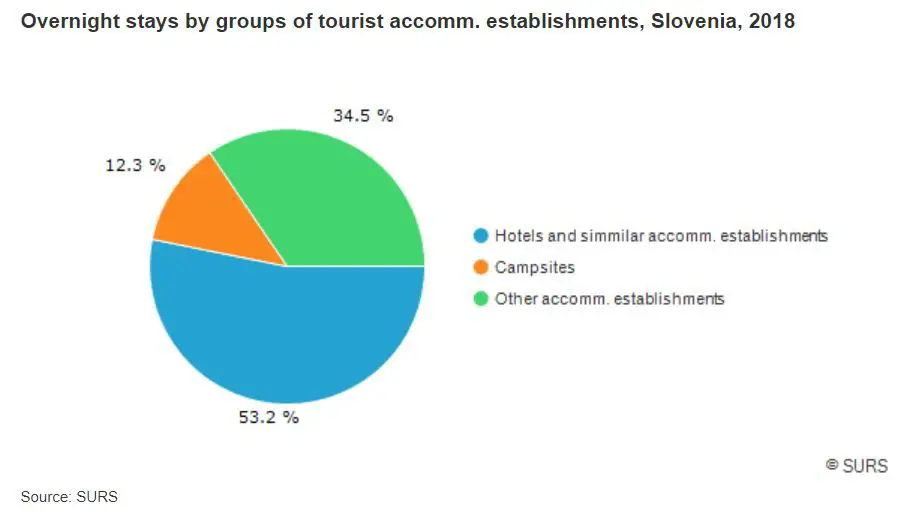Travel
If you’ve ever wondered roughly how many festivals there are in Slovenia, how they’re distributed through the year, and where the main focuses are, then you’re in luck. The good folks at Culture.si have been producing interactive infographics with just this information since 2012. The one for this year, 2019, can be seen at the top of this story, while an interactive version with details in each square, can be found on the main website.
A few things to note from this year and others. One is the dominance of musical events, accounting for 48 out of the total of 146 festivals currently on the site for 2019, followed by dance & theatre (24) and film (22) – with food and drink festivals not included in these calendars. Another is summer being the clear peak season for festivals in Slovenia, with the top month being August.
A third observation, and a surprising one, given the seemingly relentless increase in tourist numbers, and thus tourist offers, over the last decade or so, is that the number of festivals isn’t increasing. While this could be due to data collection issues, since it’s already late March, and these events will have been planned for months, it seems likely some events have been consolidated or simply disappeared over time.
data from culture.su
You can play around with the infographic here, while you can see a list of all 215 festivals on Culture.si here. finally, readers interested in the history of festivals in Slovenia can explore this timeline, which gives the first appearance of each of the events.
Related: What's on in Ljubljana
STA, 19 March 2019 - Air carrier Adria Airways is cutting a number of regular routes this summer, Ex-Yu Aviation portal has reported. The company said on Tuesday that it would fly to 16 destinations and increase the frequency of flights to some of them. Meanwhile, passengers will still be able to reach the abolished destinations via other Star Alliance carriers.
It will bump up the number of weekly flights from Ljubljana to Munich, Prishtina, Skopje and Tirana, as well as flights from Prishtina to Frankfurt and Munich, the Slovenian-based air carrier said in a press release.
During the summer season, between 31 March and 26 October, Adria will fly to 16 destinations from Ljubljana: Amsterdam, Brussels, Copenhagen, Frankfurt, Manchester, Munich, Paris, Podgorica, Prague, Prishtina, Sarajevo, Skopje, Sofia, Tirana, Vienna and Zürich.
In total, the carrier will be flying 194 times a week on 20 different routes, the company said.
On the other hand, Adria is abolishing flights to Belgrade, Berlin, Delhi, Düsseldorf, Göteborg, Hamburg, Helsinki, Istanbul, Kyiv, Moscow, Oslo, Singapore, Stockholm, Stuttgart, Warsaw, and Geneva, Ex Yu Aviation says.
According to Adria Airways, all of the abolished destinations, except Kyiv, can be reached by direct or indirect flights operated by other Star Alliance carriers.
CEO Holger Korwatsch was quoted as saying in the press release that the situation in the industry was demanding and that the company could not allow a repeat of last summer. In December 2018, Adria had to be recapitalised or else face losing its flight licence.
Open Kitchen is a focus and highlight of the week for many in downtown Ljubljana, bringing stalls selling hot food and cool drinks to the marketplace between the river and Cathedral each Friday, running from an early lunch to dinner. With the culinary event returning for another season at the end of this week, and set to appear at five other towns in Slovenia, we sent some questions to Lior Kochavy, the busy co-founder of the project, and he was kind enough to reply.
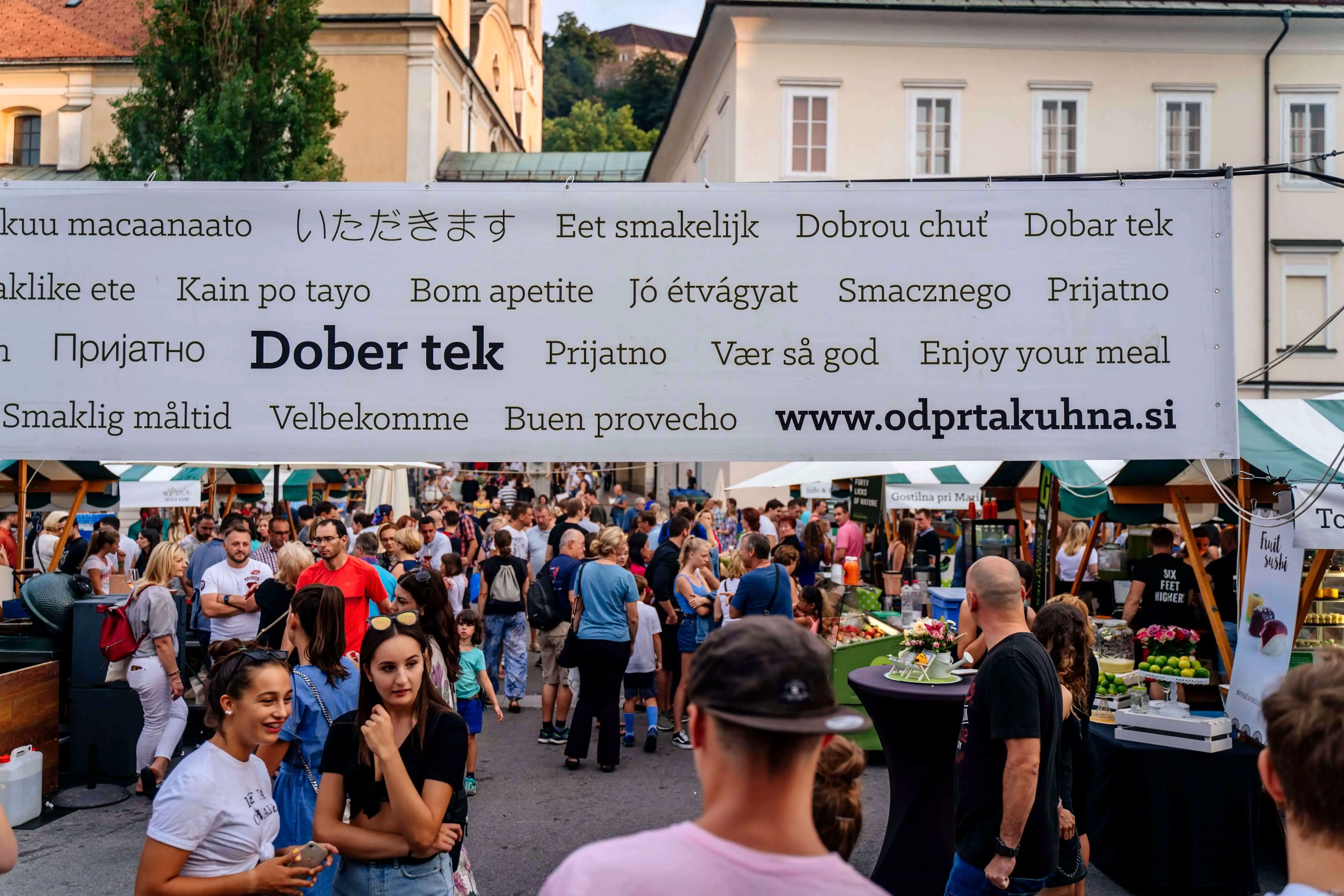
How long has Open Kitchen been running?
The first Odprta kuhna (or Open Kitchen) happened on Pogačarjev trg in Ljubljana in 2013, so we are just about to start our 7th season on Friday, March 22. It is going to be pretty special as it turns out, because the opening will be the 150th Odprta kuhna event in Ljubljana and our 200th Odprta Kuhna event ever. You see, we also take Odprta kuhna on tour around Slovenia to Celje, Koper, Nova Gorica, Ptuj and Novo mesto, the latter being a new location this year. Our first event in Celje is scheduled for March 30, we go to Novo mesto on April 13, to Ptuj on April 20, to Nova Gorica on April 24 and to Koper on June 15.
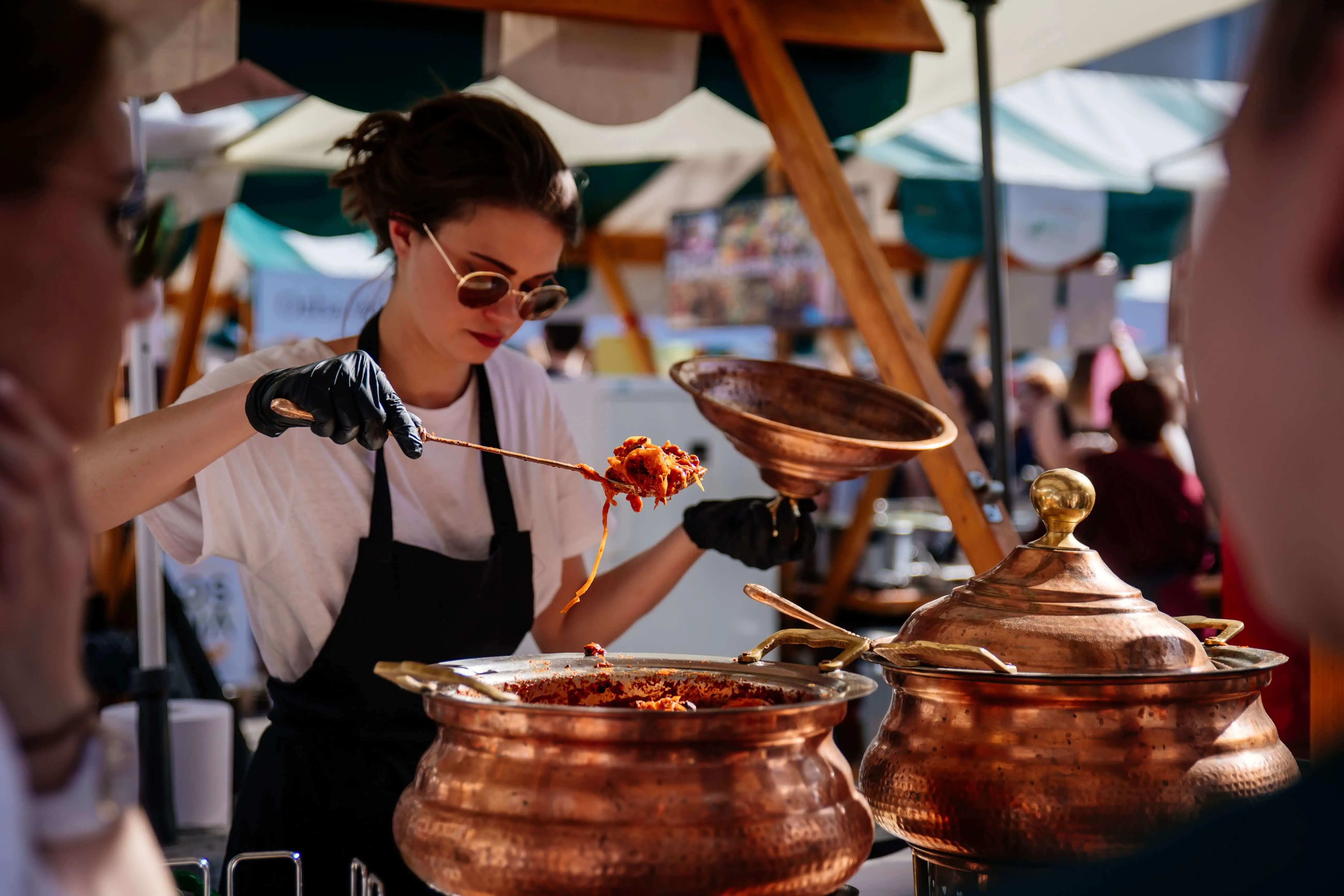
How has it changed over the years?
In some ways a lot and in other way not at all. The concept and the standards – in terms of quality, creativity and innovation – have remained the same, but of course the event grew and continues to grow in all aspects.
When we first started there were not a lot of people who understood what we wanted to do. But luckily one those people who understood was the Mayor of Ljubljana. On the very first event we had around 20 stands and it was a disaster, as it started to rain three hours after we opened. But we carried on and today we co-operate with around 80 different restaurants. In Ljubljana around 50 stands are full every Friday (this is how many fit to Pogačarjev trg) and the variety of food and drinks on offer is fantastic.
Odprta kuhna became a fixture in Ljubljana's social life, this is where the weekend begins, but we also became an important tourist attraction. Readers of The Guardian chose Odprta kuhna as one of the best street-food markets in the world, and the BBC placed Ljubljana as the third on this year's Top 10 Destinations for foodies list. We also expanded beyond Ljubljana and added new locations – this year Novo Mesto, in 2017 Ptuj, a year before that Nova Gorica...
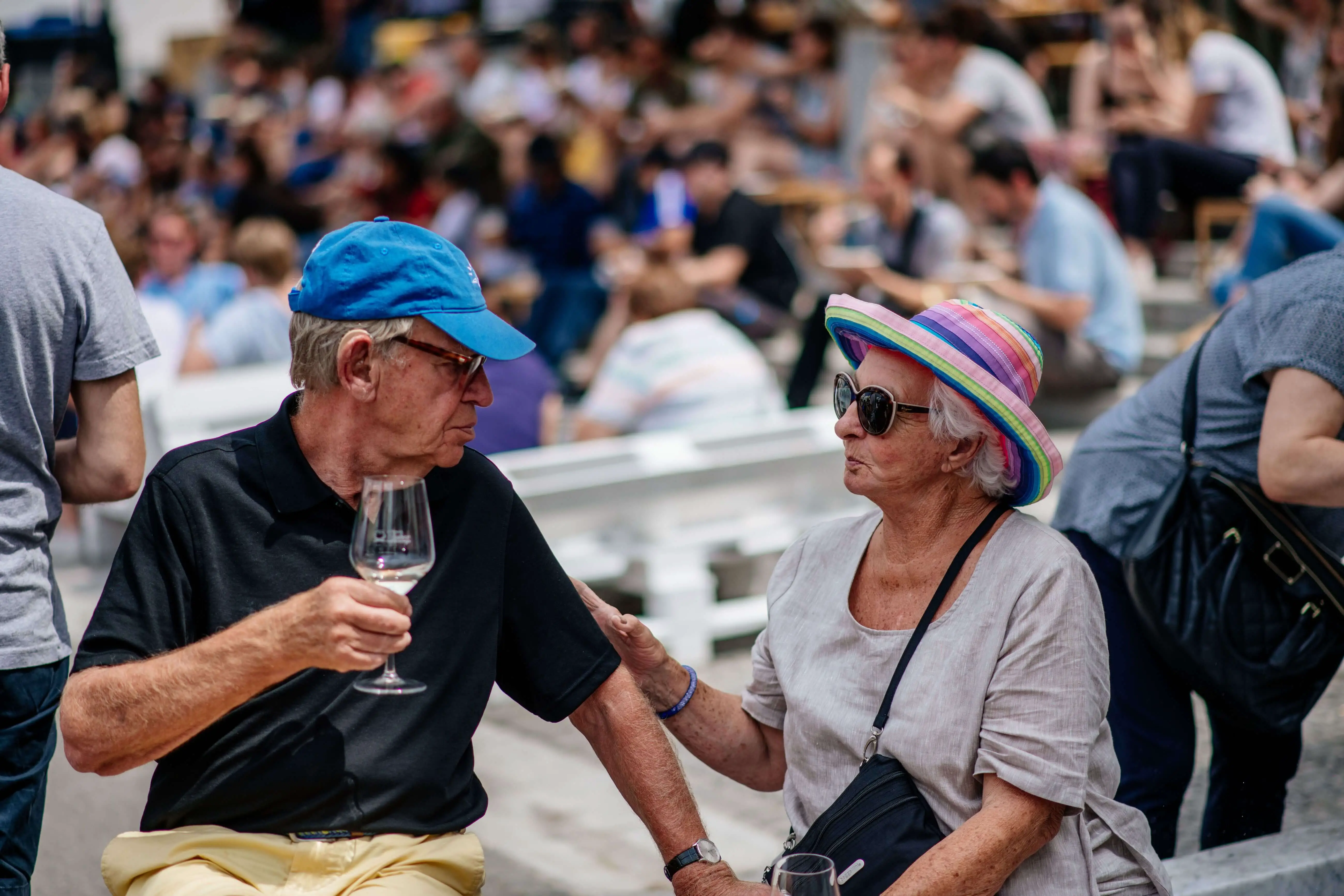
You also run Pivo & Burger fests – do you have any other special events?
Yes, besides Odprta kuhna and Pivo & Burger Fest, which will take place on Pogačarjev trg on April 6 and 7, we are launching a new event this year called Brina, Ljubljana gin festival. It will take place in beautiful Tivoli Park in and around Švicarija House, and it’ll be delicious! There is a number of excellent Slovenian gin distillers who will participate, and we’re talking top quality gin here. There will be speciality cocktail, tastings, food pairings, mixologists and gin connoisseurs from abroad, top chefs preparing amazing food, there will be music, art and good times, so Brina will definitely be one of the highlights of the season.
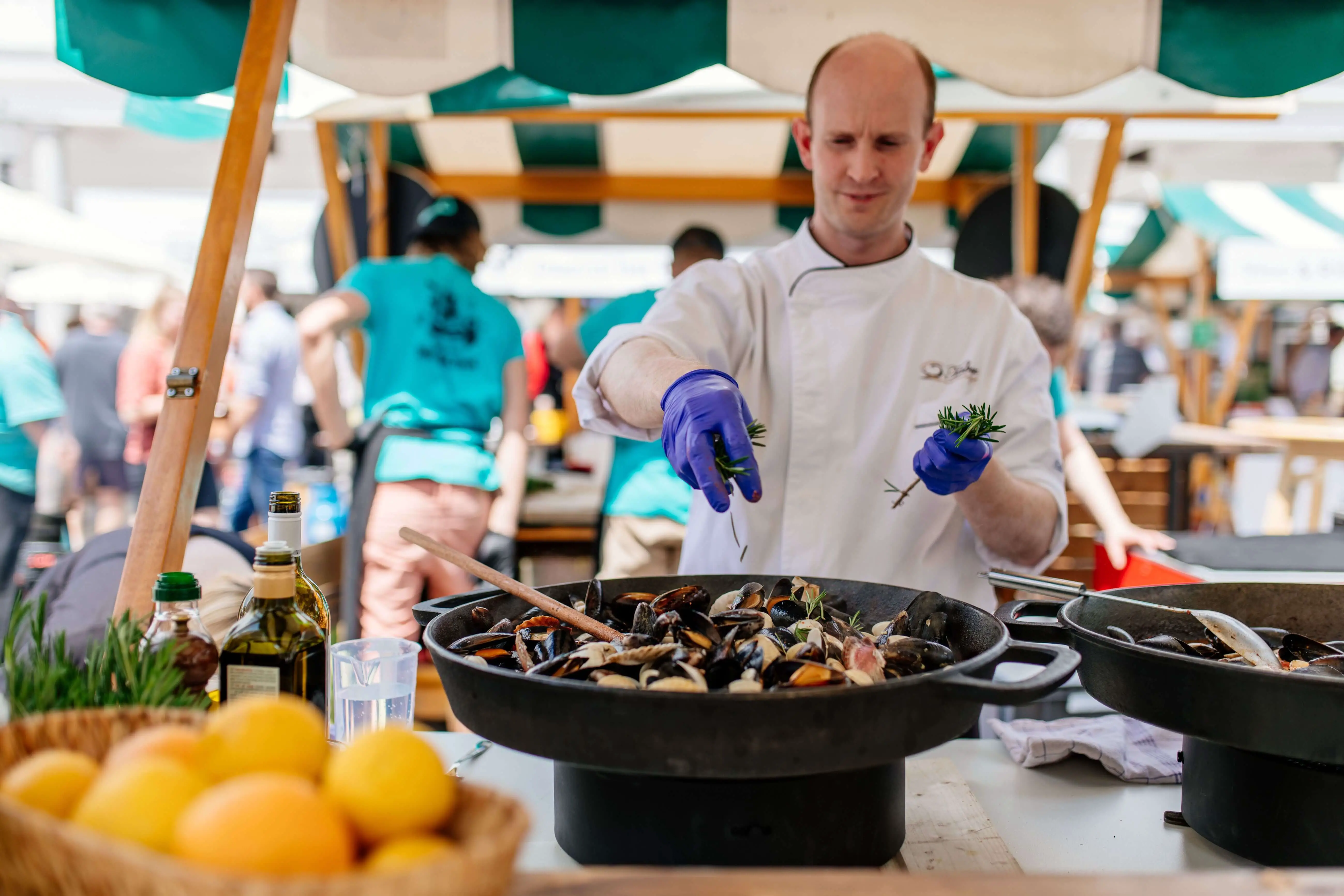
Is there anything new for this year?
Yes, at Odprta kuhna a number of new restaurants will participate – such as Gostilna Grabar, Hotel in restavracija Planinka, Gostišče Barbara, Pivnica Lajbah, Restavracija Evergreen, EK Bistro, El Patrón Tacos & Store, Fermen(s)tation, Pop's Place, Fejst™, TINK superfood café and La Ganache – and in April we will add a new stand, dedicated to natural, living wines.
In summer there will also be a special section of Odprta kuhna called Taste Slovenia where producers of Slovenian delicacies, tourist organisations from all over the country and producers of handmade kitchen and food related products such as wooden boards, ceramics and knives will present themselves as they did last year very successfully.
And of course we are very proud that some of the country's best chefs trust us and participate with us, such as legendary Janez Bratovž (JB Restavracija) and fantastic young chefs like Jorg Zupan (Atelje), Luka Košir (Gostišče Grič) and Mojmir Šiftar (Evergreen, named Young Talent of 2019 by Gault&Millau Slovenija).
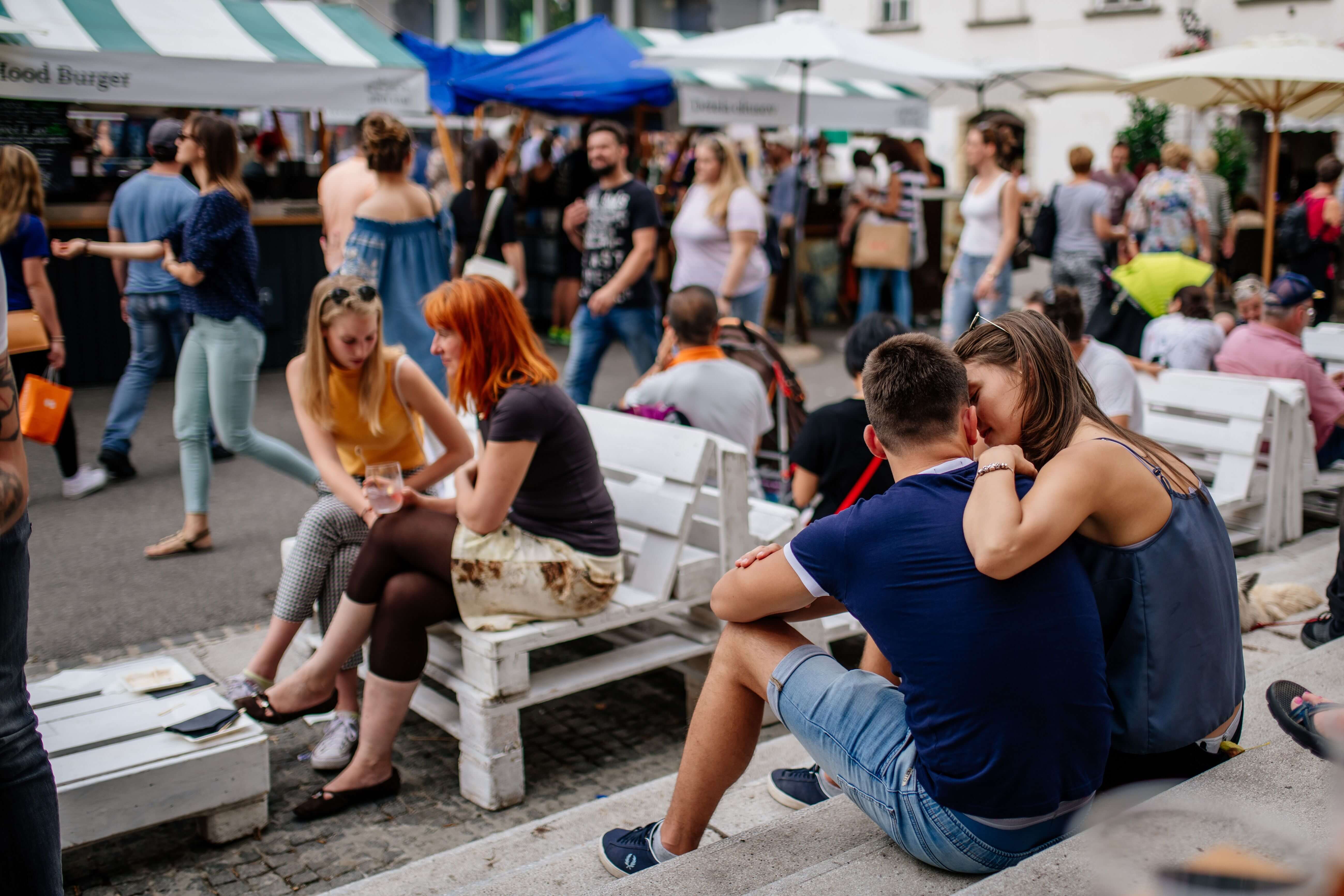
Where can people learn about the dates?
We have a lovely website where you can find out all about the dates (and, fortunately, very few cancellations due to bad weather) and much more. Of course we are also very active on social media. You can find us on Facebook and Instagram.
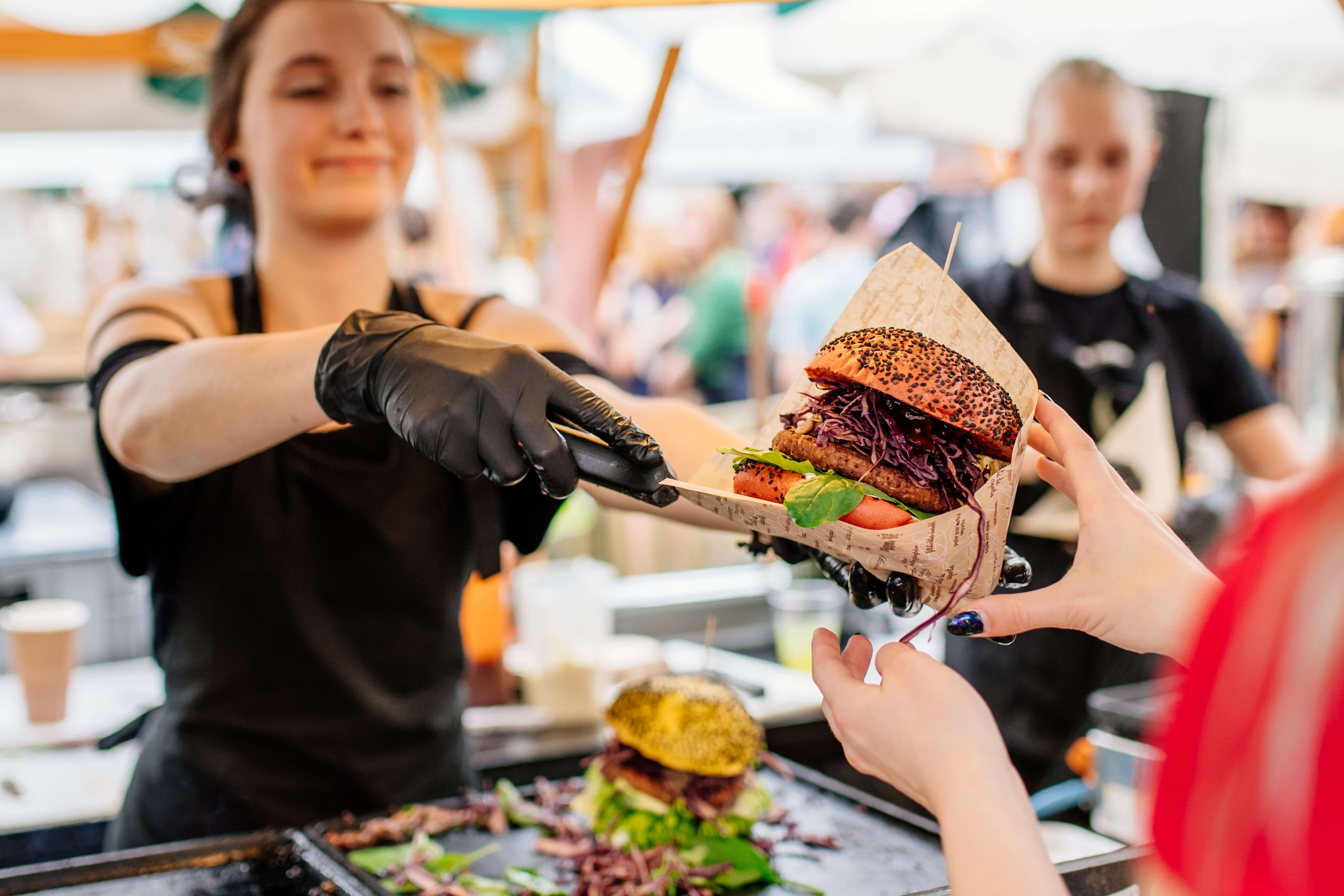
Personally, what do you enjoy most about the Open Kitchen events?
The food, the people, the atmosphere, the socializing, the buzz... I could go on. Odprta kuhna brings joy to people, it is open to everyone and everyone can try something new, meet old and new friends, explore and simply have fun.
I am there every single event from early morning to late evening and I never get tired of it. All of the people who work there are like family to me, I stop by every single stand at every single event to chat, make sure everybody is happy and doing well. In Ljubljana, where we have events on Fridays, there is also this collective sigh of relief that the weekend is about to start and it is a vibe you can feel very distinctly, you can almost touch it.
Related: What's on in Ljubljana this Week
Ex-Yu Aviation, the best site we know for flight information in the area, reports that British Airways is set to increase its capacity this summer on flights between London and Ljubljana. By switching from an Airbus A319 to A321, the carrier will be able to carry 76 more passengers, up to 220, on a service that’s scheduled to run from 15 July to 2 September (2019).
There are two services a week on the timetable, operating on Monday and Friday. The flights leave London Heathrow at 17:20 and arrive at Ljubljana Jože Pučnik Airport at 20:35. In the other direction, passengers can expect to take off from Slovenia at 21:20, and touchdown in the UK at 22:35.
All our stories on air travel and Slovenia can be found here
FishingBooker, “an online community that enables you to list, find and book the best fishing trips worldwide” has released a list of the “10 best fishing holidays in Europe”, with Slovenia’s Lake Bled among the featured destinations.
As the site says in write-up of an area perhaps less known for its angling potential than its castle, church on an island, kremšnita and seasonal crowds:
Bled feels like a different world or maybe even a different century to most European holiday spots. Between Lake Bled’s island fortress, and the green slopes of the Julian Alps, the area seems almost too good to be true. Hundreds of thousands of tourists visit Bled every year to admire the serene beauty of this town. For anglers, Bled offers alpine, chalk stream, and freestone rivers full of four different trouts, all within half an hour of each other. And it’s not just about the rivers. Lake Bled is home to pike, carp, and even zander. All this, in one of the prettiest places in Europe.
The full list, in alphabetical order, is:
Bled, Slovenia
Costa Adeje, Tenerife, Spain
Dubrovnik, Croatia
Funchal, Madeira, Portugal
Herceg Novi, Montenegro
Inverness, Scotland
Lisbon, Portugal
Marbella, Spain
Santorini, Greece
Stockholm, Sweden
You can read FishingBooker’s full story here, while you can see all our posts on Lake Bled here, our posts on fishing here, and our slightly flawed but still delicious recipe for kremšnita here.
STA, 7 March 2019 - Ljubljana, the lakeside resort Bled and several other Slovenian towns included in the Slovenia Green scheme have been awarded at ITB Berlin, one of the world's largest and most prominent tourism trade fairs.
Ljubljana won in the category Best in Cities with its campaign promoting local food production entitled the Exchange of Local Foods.
The first meeting of producers and potential buyers of food from Ljubljana and central Slovenia was held in February and attracted more than 80 food producers, representatives of schools and kindergartens, hotels and restaurants.
"Locally produced ingredients are a trend in modern cuisine that is becoming an increasingly important element of Ljubljana's tourism, so we plan to continue with the Exchange of Local Foods ..." said Petra Stušek, the head of Turizem Ljubljana.
We just kicked off @ITB_Berlin 2019 with 35 Slovenian tourism partners ?
— Feel Slovenia? (@SloveniaInfo) March 6, 2019
?Visit us at Stand 109, Hall 17 and explore the culture and beauty of your favorite destination!
?https://t.co/F1OMIiM4TQ#ITBBerlin #ifeelslovenia #myway #itsculturetime pic.twitter.com/QoPz2zzcrY
Bled received the second prize in the category Best in Europe, which Tomaž Rogelj of Turizem Bled sees as a reward for the town's efforts in environment protection. It is also an encouragement for new measures promoting sustainable tourism, he said.
Meanwhile, Komen, Rogaška Slatina, Idrija, Koper and Podčetrtek were among the 25 finalists in the category for their efforts for responsible tourism, the Slovenian Tourism Board (STO) said after the accolades were handed out on Wednesday.
The Sustainable Top 100 Destinations awards are conferred by an NGO promoting sustainable tourism, Green Destinations, which declared Slovenia the first green country in the world in 2016.
Last year, Slovenia was among the top six most sustainable destinations in the world and the top in Europe.
A total of 64 destinations, service providers, parks and travel agencies in Slovenia are currently included in the Slovenia Green scheme and another 11 are to be included shortly, the STO said.
A leisurely walk in the woods in many countries, especially in my home country of England, invokes an image not only of peace and tranquillity, but also one of relative ease and safety. One of the advantages of the UK is that nothing really dangerous lurks in our woods; other than the odd crazy person with an axe or a gun. In Slovenia however, while you are less likely to encounter an axe-wielding homicidal maniac, there are other more natural dangers to be aware of: bears!
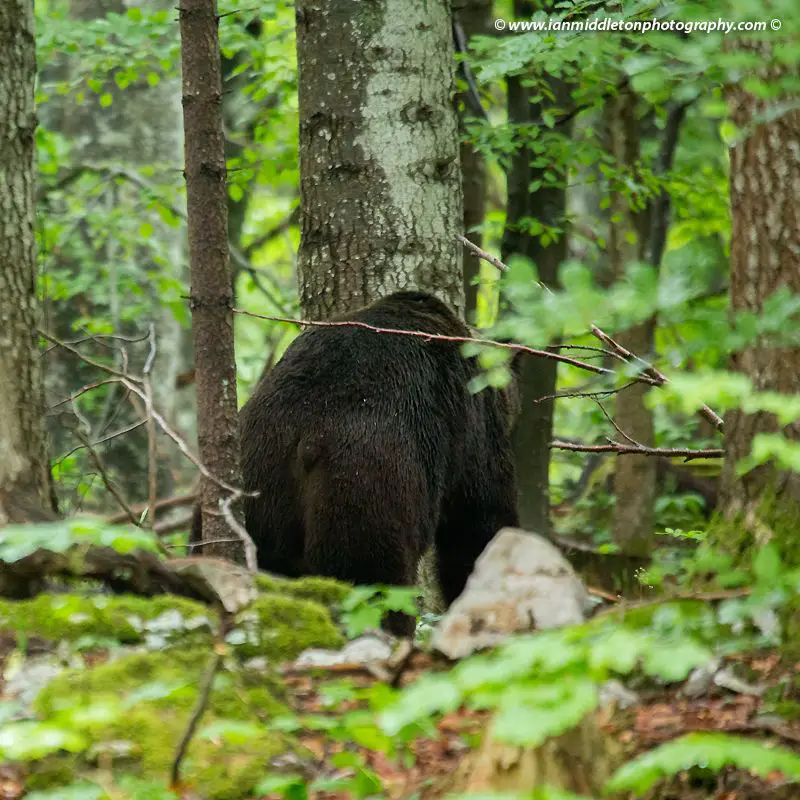
Brown Bear in the forest in Notranjska, Slovenia.
If you go down to the woods today, the likelihood that you’ll encounter a bear is extremely low. Over the years I have frequently gone driving and walking in areas where I had hoped to see or photograph them. Not a single sighting. Yet there is an estimated 800-900 European Brown Bears in Slovenia, bearing in mind (pun intended) that many of these bears and other wildlife routinely wander between Slovenia and Croatia. The brown bear is an elusive creature and at best it’s safer to go with a hunter, or an organised tour.
A few years back I did manage to find someone who had setup a series of hides specifically designed for photographers, so I was able to finally go on a bear watch and capture some great photos. However, while these are ideal for serious amateur or professional photographers, they are not so good for tourists who simply want to see the bears but don’t have the expensive camera equipment required to photograph them.
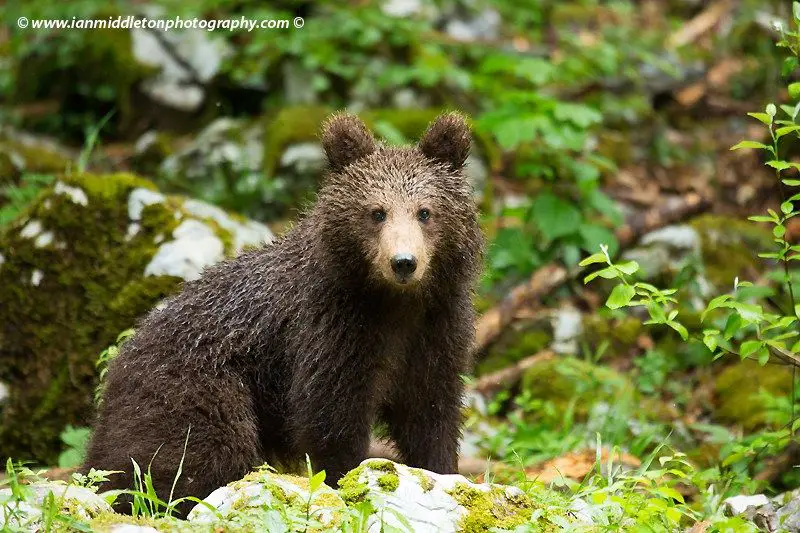
A one year old Brown Bear Cub in the forest in Notranjska, Slovenia.
So imagine my delight when I found Bears and Wildlife Tours. Based at the tourist office in the little village of Hrib, in the municipality of Loški Potok, they offer an array of wildlife watching tours as well as bear viewing huts. But the most intriguing of all, was the offer of staying the night in a simulated bear cave. I had to go and see.
The journey took me south from the capital Ljubljana to the border with Croatia, where I met with Tjaša, who organises and coordinates the tours, and Stanko, a local hunter and guide. We were already late into September so they told me that the chances of a sighting were low because the bears usually come out late in the evening, and as the sun is now setting earlier it would more than likely be dark by this time. But they would take me to see what they had to offer anyway.
Over a strong cappuccino, they told me a little about the bears and what they offer. They currently have about 7 hides in total, 3 in the Loški Potok region. This gives them much more scope to ensure a sighting for their guests. “We have never seen the same bear at each of our hides. The bears travel around 60kms per night or day. Many go from Loški Potok to Cerknica, and of course across the border,” said Tjaša.
The bears tend to travel over a specific area. A mother bear can remember from 5 years before where she got a good meal. Amazing, I struggle to remember where I ate yesterday!
Their numbers are increasing. In 1960 there was an estimated 150 bears in Slovenia. In 2018 that number was around 900. These numbers apparently swelled during the Balkan conflict; where many bears I guess fled here for asylum! I asked how it’s possible to know the numbers. “Hunters collect bear poo and send it to Ljubljana to the institute and from the DNA they can estimate their numbers. Every year the number is increasing,” replied Tjaša.
Mother bears in Slovenia are now giving birth to 3 cubs instead of 2. Rarely before have bears had more than 2. This is also an indicator that the quality of their habitat and food source is improving. 2018 was a particularly good year for food, as conditions that year made not only the forest rich with food, but the village orchards were overgrown with fruit. Stanko explained to me how September 2018 has seen an unusual rise in bears coming into the villages, much more than previous years. In autumn the bears are fattening up for the winter hibernation.
The improved quality of the habitat is partly down to conservation work, and rules being enforced that prevent hunters or bear tour organisations from feeding the bears within 2kms of a village. This helps stop them from wandering into villages in search of food and prevents any incidents with locals, and also accidents with cars. One of the biggest threats to bears is being hit by cars.
Every year the government sets an annual cull to try to control the population. For 2019 it was 200, increased from previous years because of the reasons above. However, this decision was suspended by the administrative court after a case was brought by the environmental protection organisation Alpe Adria Green (AAG).
A Winter Den and Bear Jacuzzi
After coffee we headed out for the first part of the tour. Stanko drove us to a location a few kilometres outside of town, where we stopped beside a forest road. He pointed to the forest and said that just up the hill is a winter den for a mother bear.
Bear dens are always close to water, so they can often be close to the road and village. Stanko and Tjaša then pointed to a stream running out of the forest to the roadside and told me how the bears will seek out sources of water, especially when it’s very hot.
These pools of water or streams are mostly deep in the forest well away from people and villages. However, they are also found on roadsides like this close to villages, because the water that runs off the forested hillsides collects in pools by the road. Stanko regularly comes here deer hunting and told me how, early one morning around 5am, he spotted a bear immersed in a pool of water up to its neck, with just its head poking out the surface.
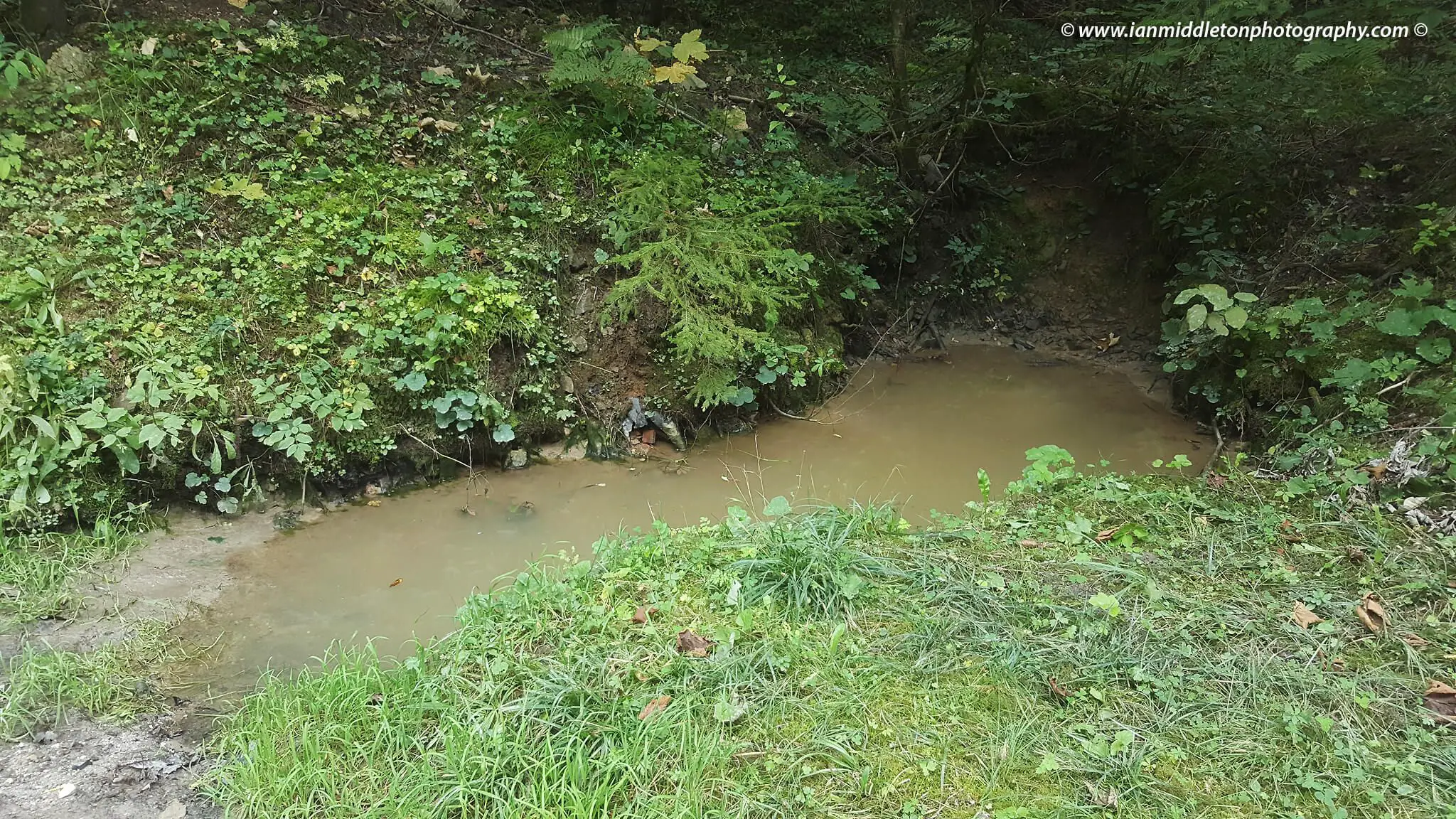
“I call it the Bear Jacuzzi”, he laughed.
The bears often come to these roadside pools to cool off in the heat of the summer days, and Stanko, and likely many locals, see them as they drive these forest roads.
Mushrooms – A national sport
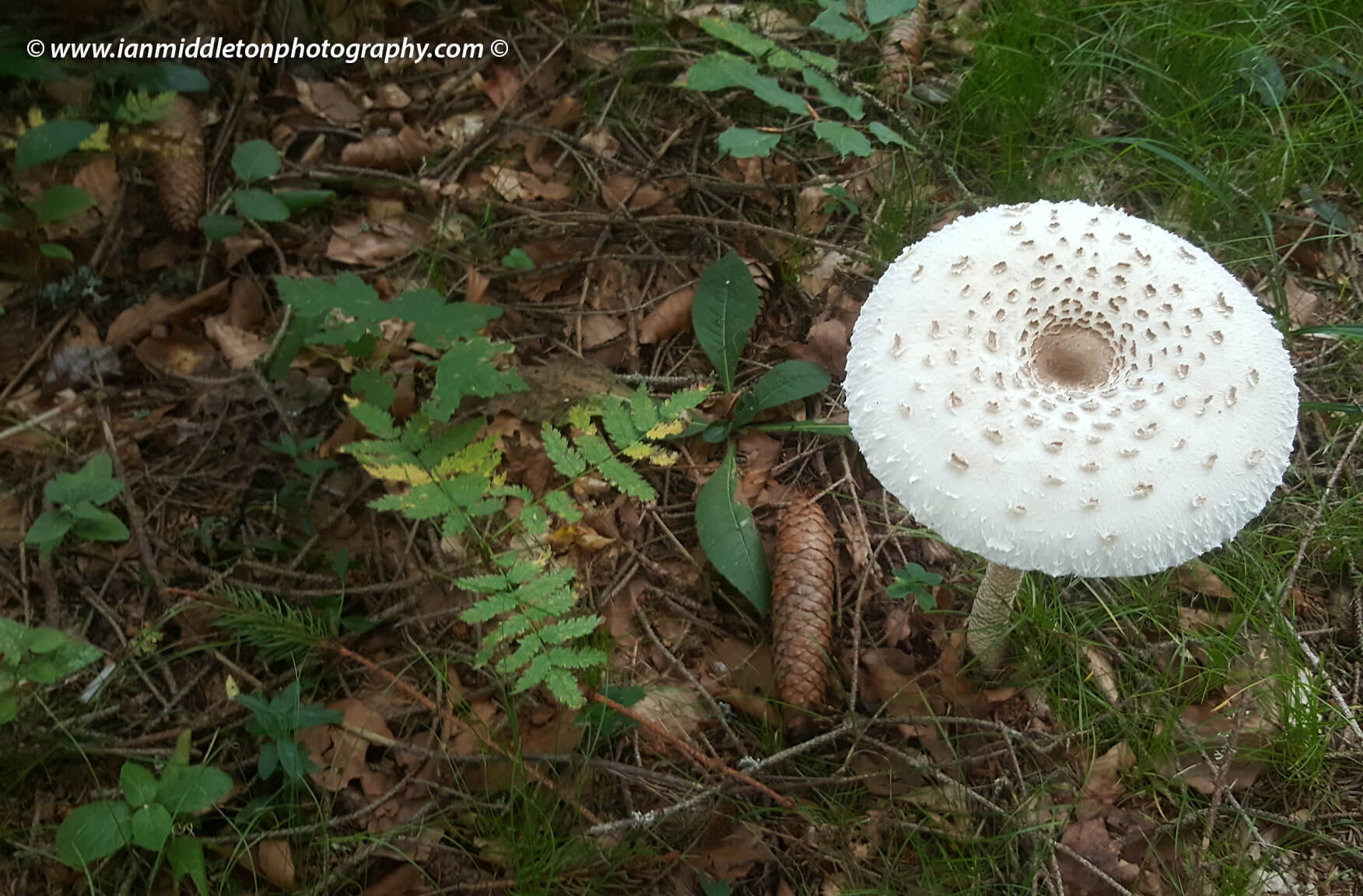
Wild Parasol mushrooms, known as Marela in Slovenia.. Macrolepiota procera or Lepiota procera
I then followed them up the hill to the winter den. On the way Tjaša picked some mushrooms and described how to prepare them. Mushroom picking, along with other forest fruits, is a national sport here in Slovenia. Every season the forests are packed with locals out mushroom picking, and they are usually racing each other to get the best and most. She also explained how to tell the difference between a poisonous and non-poisonous one.
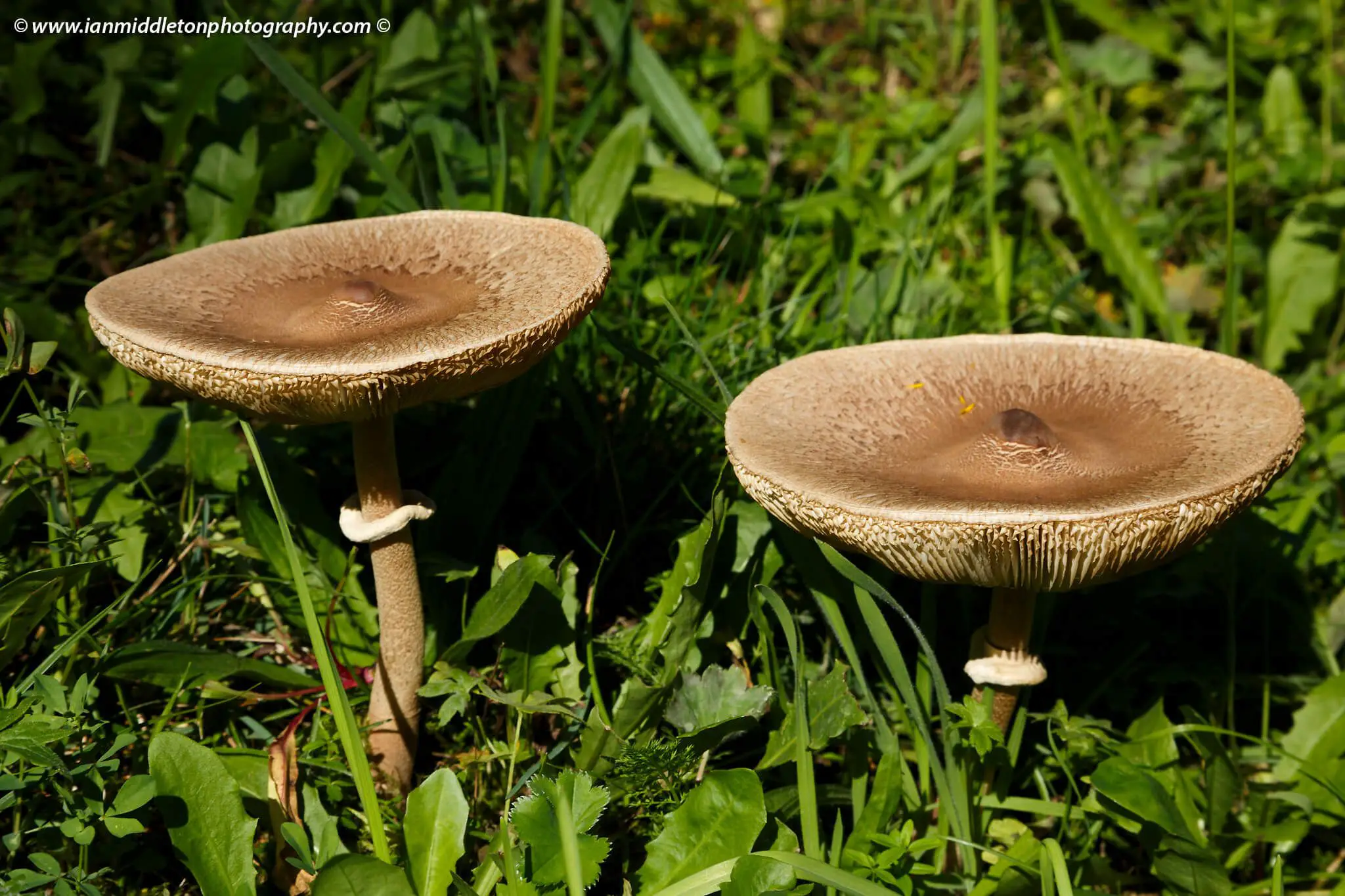
Wild Parasol mushrooms, known as Marela in Slovenia. As you can see, on the stem this circular piece is an indication that the mushroom is non-poisonous.
“I’ll take these to my mother in law’s tomorrow for cooking,” I said.
I feel I should add here that I fully intended to give my mother in law the non-poisonous mushrooms.
Slovenian folklore says that if you see a mushroom in the forest you must pick it immediately, no matter how big or small it is. Once someone has seen it, the mushroom will stop growing. Tjaša also explained that when you pick a mushroom you must clean it there and then in the forest before you take it away.
The bear cave
Bears hibernate during the winter in a den, essentially a small cave deep in a hillside. The entrance is narrow, but inside it is very wide and deep. The bear can get inside because its head and neck are very small and it doesn’t have a collar bone, so can squeeze its body through.
The bears enter the den when the first snow comes, or before if it’s a pregnant female. She will give birth in January and emerge from the den in April with her cubs. The cubs remain with the mother for two years. Therefore the bear has cubs every three years.
The male bear typically weighs 300kgs, while the female weighs 150kgs, so they can tell by the small size of the den that this is for a female only.
Responsible tourism
Bears and Wildlife Tours believe in keeping tourism to a minimum. Therefore they don’t have tours every day in the same location, so the wildlife isn’t disturbed too much. Bears can smell fresh blood from up to 4 kilometres away, and have excellent hearing too. If too many people are around the bears will hear and keep well away. Unless you are hunting!
On the way to our next destination, the viewing cave, Stanko told me a story about a time he shot a roe deer. Afterwards he placed his rifle against a tree and proceeded to cut open the deer and gut it. When he had finished pulling everything out, he took the gutted deer to his vehicle about 400 metres away.
Upon his return, Stanko got to within 100 metres to discover that between him and his rifle was a big male bear feasting on the leftover deer. It was not the most ideal of circumstances, so Stanko had no choice but to patiently wait before he could retrieve his firearm.
So to not only ensure the safety of visitors, but also ensure they don’t scare away the bears and other wildlife, they practice responsible tourism and ensure the numbers are kept low, and wildlife tours are conducted in different places each time.
There are very strict rules governing hunters and tourist organisations offering wildlife tours or trips to see bears in Slovenia. Along with the 2km rule, it is forbidden to feed the bears with farmed meat. But when gutting a deer it’s permitted to leave the leftovers in the forest for the bears to find, as long as they don’t find you first! But while an attack is undoubtedly terrible for the victim, it also means a death sentence for the bear. Once a bear has attacked a human being, it will be hunted down and killed. So these rules are not only there to protect people, but to protect the bears too.
Despite its love for meat, bears are actually 90% vegetarian. A sobering thought when you are just about to trudge through bear country.
Off to the bear viewing cave
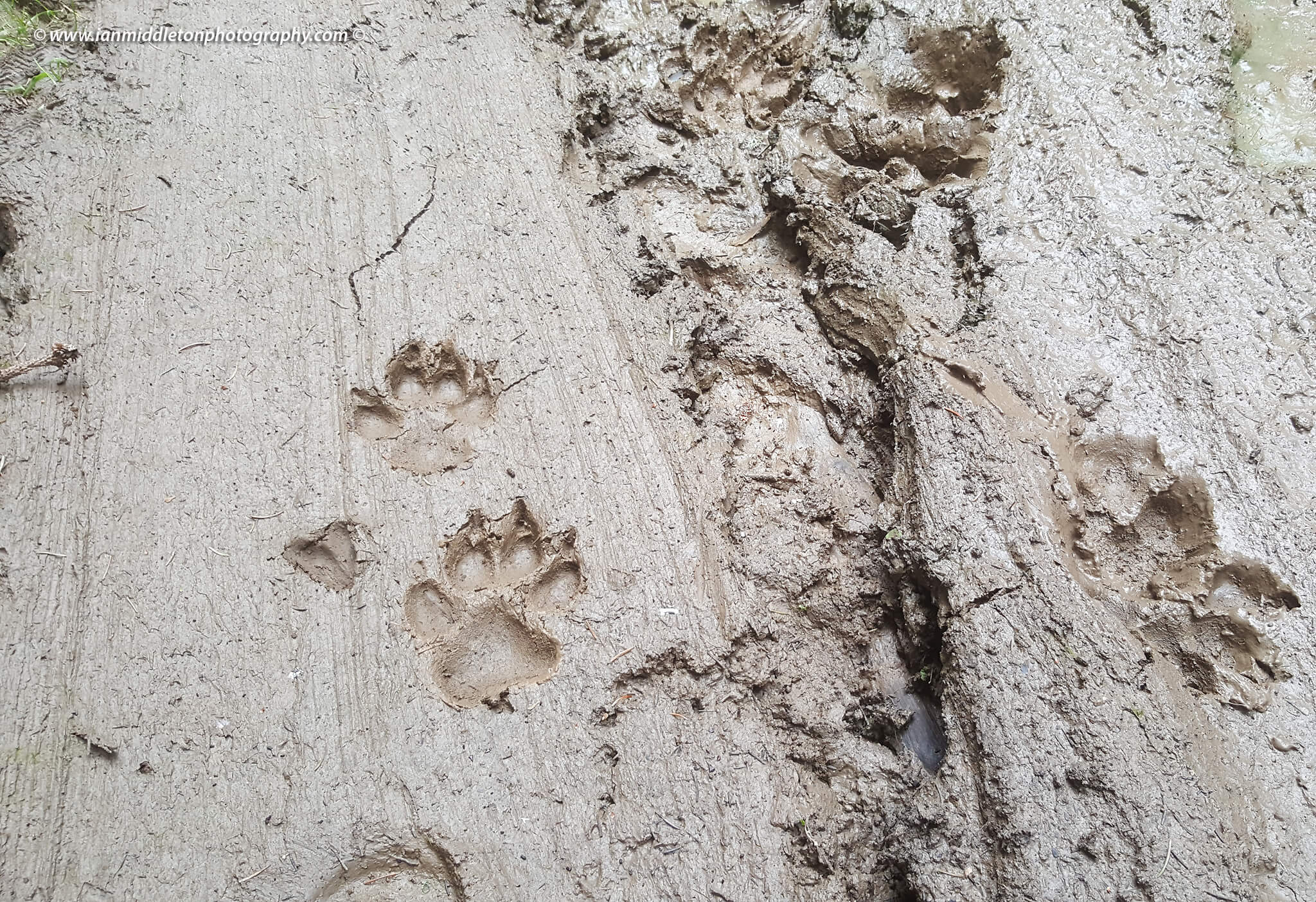
Wolf footprints in a forest in Loski Potok, Slovenia
We then headed off to the starting point of our walk deep into the forest to one of their viewing huts and, in this case, the bear viewing cave which you can sleep in. Along the way we spotted some wolf tracks, apparently attracted here because it’s deer mating season. As we got deeper into the woods I was told that from here on we must be very quiet and talk in whispers, or else the bears will sense us. In our case, we were here to spot them, so didn’t want to scare them off.
I just hoped the big bucket of apples that Tjaša was carrying wouldn’t encourage them to overcome their fear of humans!
What to do if you encounter a bear
Contrary to popular belief, bears are not the man-eating beasts they can often be portrayed as. In fact, they are very nervous creatures and will likely hear you first and keep well away. Attacks are usually the result of a bear being startled by a walker, or often a bird watcher who is not making any noise; or a photographer sneaking around to take photos. The bear will only attack if it sees no means of escape. Or if you inadvertently come between a mother and her cubs, you’re in for trouble.
Ordinarily when walking in the woods the advice is to never walk alone, and walk and talk (but don’t shout), make as much noise as possible in order to stay safe and avoid startling a bear, or other wild animal. This way the bear will hear you first.
There are many stories about what to do if you happen to surprise a bear. Although the instinct is to run, this is apparently the worst thing to do. A bear can run much faster than you, and if you run it will see you as a threat. Some say you should grab a stick and make yourself look big and loud. If the bear charges at you, remain still. Chances are it is a bluff and will veer away at the last minute.
Another crazy theory I heard is that you should run downhill, because the bear’s front legs are shorter and it cannot run fast downhill. But Tjaša laughed and said that the bear will still outrun you.
Tjaša’s advice is simple: back away slowly, always keeping your eye on the bear and it will very likely run away from you.
The Bear Cave
When we arrived at the viewing spot, a wide open meadow at the edge of the forest, Stanko went off alone first to check it was safe. Then they both prepared the food they would put out to try and attract the bears; Tjaša didn’t touch the food to ensure any human scent was kept to a minimum. For obvious reasons, the area was a short distance away from the viewing area. Tjaša explained that, for the reasons above, Stanko alone must go; no one else, not even her.
This particular viewing area is actually right beside the Croatian border. There are two places from which to observe the bears. The first is a viewing hut setup for both photographers and casual observers. The second is the specially designed bear cave. Here they have built a small wooden room into the rocks that is designed to simulate a bear’s den. Inside I was surprised to discover a cosy double bed and a row of seats next to small windows that look right out across the field to where the bears will hopefully come.
Stanko returned with a special night vision camera that they clamp to a tree where the bears are. It is triggered by movement so they can see when they are active at night. The previous night they came at 9pm, after dark. This was not looking promising for me. But as they had explained I was well into September now so the chances of a sighting during daylight were much lower.
The camera also showed a bear was here at 8.30 in the morning. So this goes to show that a night in this bear cave will undoubtedly increase your chances of a sighting. Sadly, commitments elsewhere meant I couldn’t stay the night.
The best time to take this tour is in high summer, from late May through June and July. August is also a possibility. The tours start at 16:00 and end at 22:00. There are several observation points like this, all on hills in areas of wide open space with lots of light.
But there is only one bear cave, and in this case you get to spend the night here. Naturally this increases your chances of a sighting, because you can also wake early and likely see them in the early morning.
Soon after, Tjaša and Stanko left. Just before he bolted the door, Stanko looked at me and said: “Do not go outside.”
I had no intention of doing that.
I was alone. All was quiet. I settled down for the evening, camera ready. When I had been on the photography tour a few years before we were extremely lucky that, not more than 30 minutes after settling into the observation hut, a couple of one-year old cubs came, followed by the mother and soon after a big male.
As the time ticked away I continued to live in hope. A bird of prey was swooping by occasionally, but sadly no bears.
Stanko returned to collect me after dark, and we trudged on through the forest without torches back to the car. Along the way he told me how he had been privileged to see a lynx in the forest. The Eurasian Lynx was reintroduced to Slovenia in 1973 by a hunter’s initiative. The current population is estimated at about 15-20. Thus not only are their numbers low, but they are very shy animals so a sighting is extremely rare. He showed me a photo he had. “It was a big privilege for me,” he said, proudly.
The love and respect that both Stanko and Tjaša have for the bears and other wildlife is clearly evident.
All this just goes to show how difficult it can be to spot the wildlife, and how important it is to go with an organisation like Bears and Wildlife Tours. Not only will they ensure your safety, as long as you follow their rules and instructions to the letter, but it will increase the chance that you too will be privileged enough to see one of these magnificent animals in their own habitat.
I had seen them before, but sadly not this time. However, I plan to return in May or June for another tour, and maybe even an overnight stay in a bear cave!
How to go
If you would like see bears, then visit the Bears and Wildlife Tours website. They also offer other wildlife tours, including as well as the bear cave, the opportunity to sleep on a rocky shelf in the forest and experience the sights and sounds of nature, with your guide there to keep you safe.
More info and bookings here: www.bearsandwildlife.si
Check out a video of the trip below:
For a more comprehensive look at Ian’s photography, check out his free e-book here. You can see many images in higher resolution, find other photo posts and subscribe to his newsletter here.
STA, 5 March 2019 - Maribor, Slovenia's second largest city, was visited by almost 202,300 tourists last year, up 13% from 2017, and the number of nights they spent there reached a record 451,610, a rise of as much as 36%.
The majority of nights was spent in Maribor by tourists from Germany, Croatia, Poland, Italy, Serbia and Austria, whereas only 13% of domestic tourists decided to stay more than one day.
The average period a tourist spent in the city thus increased from 1.86 days to 2.23 days.
"We've surpassed all set goals," Doris Urbančič Windisch, the director of the Maribor-Pohorje Tourist Board, told the press on Tuesday.
She attributed the upbeat figures to intensified promotional campaigns and a number of events taking place in Maribor.
Last year, the board promoted Maribor and the broader destination around the Pohorje hills at 22 fairs, ten workshops and four exchanges.
It moreover worked hand in hand with organisers of 65 local events.
Maribor and Pohorje play host to a number of interesting events, not least World Cup skiing races, the Lent summer festival and the Maribor Theatre Festival.
An event attracting a number of visitors is also the pruning of the Old Vine, which is more than 450 years old and is believed to be the oldest in the world.
"The Old Vine is one of our strongest trade marks which can take the good name of the city to the world and tell people that we appreciate our past and can build new stories on its basis," Mayor Saša Arsenovič, the new Old Vine master, said.
The pruning is an opportunity for the city to give Old Vine grafts to towns around the world to strengthen cooperation with partners from Slovenia and abroad.
The Žametovka or Modra Kavčina vine has won a place in the Guinness Book of Records as the oldest cultivated vine in the world still bearing grapes.
The vine was planted towards the end of the Middle Ages, when Maribor was facing Ottoman invasion, and grows in the old city centre in front of the Old Vine House.
All our stories about Maribor can be found here, while those about tourism are here
While there seem to be few explicit appeals to the LGBT community in the official promotional efforts of the Slovenian Tourist Board, the country ranks fairly high on this year’s Spartacus Gay Travel Index, at #28. In terms of ex-Yugoslavia this compares to Bosnia-Herzegovina at 47, Croatia at 48, Serbia and Montenegro both at 68, and Macedonia at 83.
In contrast, when it comes to Slovenia’s other neighbours Austria ranks much higher, in 4th place, while Italy is at 41 and Hungary 57.
The ranking, which the German-based organisation carries out each year, is based on 14 criteria in three categories, from civil rights to discrimination and threats, based on information from Human Rights Watch, the UN Free & Equal campaign, and reports of human rights abuses against members of the LGBT community collected over the previous 12 months.
As the related webpage states:
The first category consists of civil rights. Among other things, it assesses whether gays and lesbians are allowed to marry, whether anti-discrimination laws exist or whether the age of consent is the same for heterosexual and homosexual couples. Discrimination is included in the second category. These include, for example, travel restrictions for HIV-positive persons and the prohibition of Pride parades and other demonstrations. The third category includes threats to the person through persecution, imprisonment or death penalty.
Slovenia’s 28th position is shared with Andorra, Argentina, Australia, Guadeloupe, Martinique and South Africa. The top countries on this list, sharing first place, are Canada, Portugal and Sweden, while the bottom four are Iran and Saudi Arabia (194), Somalia (196) and Chechnya (197). The United Kingdom is 4th, Germany 23rd, and the United States 47th
Gay rights in Slovenia in more detail…
Nations gain points if they have anti-discrimination legislation, same-sex marriage or civil partnerships, adoption and transgender rights and an equal age of consent. In contrast, they lose points if religion influence legislation, if there are HIV travel restrictions or anti-gay laws, if homosexuality is illegal, if Gay Pride is banned, if the locals are hostile to the gay population, or if there are prosecutions, murders, or death sentences for members of the LGBT community.
On this basis Slovenia got a total of 6 points, with the breakdown as follows
Anti-discrimination legislation: 3
Marriage/civil partnership: 2
Adoption allowed: 1
Transgender rights: 0
Equal age of consent: 1
Religious influence: -1
HIV travel restrictions: 0
Anti-gay Laws: 0
Homosexuality illegal: 0
Pride banned: 0
Locals hostile: 0
Prosecution: 0
Murders: 0
Death sentences: 0
You can read more about the report here, while you can read all our stories about the LGBT community and Slovenia here
STA, 28 February 2019 - Slovenia had another record year in tourism in 2018, with the number of tourists up by 8% to 5.9 million and the number of nights they generated up by 10% to 15.7 million, the Statistics Office said Thursday. While the number of foreign guests went up, the number of Slovenian guests was about the same as in 2017.
Tourists from abroad generated 4.4 million arrivals (up 11% from 2017) and 11.2 million nights (up 15% from 2017).
"This means that every day in 2018, 4,084 more nights than in 2017 were generated by foreign tourists on average," the Statistics Office said.
Note that the previous year = 100 for the index
The number of Slovenian guests was level at 1.5 million and they generated some 4.5 million nights, which is almost the same as in 2017.
The share of foreign tourist-generated nights has been on the rise since 2010. While tourists from abroad generated 56% of all tourist nights nine years ago, the share rose to 64% in 2015, 68% in 2017 and 71% in 2018.
They mostly came from Germany and Italy (both 12%), Austria (9%) and the Netherlands and Croatia (5% each).
The number of nights generated by guests from the Netherlands was up the most (by 22%), followed by Germany and Croatia (+17% and +16%, respectively).
Outside Europe, the most visitors came from the US, generating 3% of all nights (a 24% increase from 2017), followed by Asia and Israel.
Hospitality services in the Alps generated EUR 1.77m in revenue, which is 11.4% more than the year before, recording 4.49 million nights, up 14% year-on-year. Nearly a third of the guests came from abroad.
Hotels, B&Bs and other hospitality establishments in and around spa resorts generated EUR 1.01m in revenue (up 1%), recording 3.49 million nights, which is level with 2017. Nearly 40% of the guests were Slovenian.
At the seaside, tourism generated slightly over EUR 929,000 in revenue (6% up year-on-year) with 3.01 million overnight stays (6.9% more than in 2017).
Hotels and other facilities in Ljubljana generated EUR 1.02m in revenue (9.1% more than the year before) and recorded 2.18 million of overnights (22.3% more than in 2017).
The highest number of tourist nights were recorded in the municipalities of Ljubljana, Piran, Bled, Kranjska Gora, Brežice, Bohinj and Moravske Toplice.
Hotels accounted for 53% of overnights, with guests staying for an average of 2.6 nights, which was also average duration of all stays last year. Guests in spa resorts tended to stay the longest, 3.5 nights on average.
The Slovenian Tourism Board (STO) welcomed the latest statistics, saying 2018 had been the fifth consecutive record-breaking year for Slovenian tourism.
"The guests are staying longer on average and we're particularly happy that the value of travel exports is rising and that it reached EUR 2.7bn last year," the STO said.
More data can be found here, while all our stories on tourism on Slovenia are here
STA, 15 February 2019 - Revenue from foreign tourists visiting Slovenia reached EUR 2.71bn in 2018, up almost 12% from 2017, data from the central bank show.
The figure is around a billion euro short of the target set for 2021, the Slovenian Tourist Board said on Friday as it commented on Banka Slovenije's figure.
Data also shows that in December alone, revenue from tourism increased by a good 10%.
With more than 5.6 million tourist arrivals and almost 15.3 million nights, 2018 was the fifth consecutive record year for Slovenian tourism, early Statistics Office data shows.
The key goal of the country's 2017-2021 strategy on sustainable development of tourism is raising revenue from foreign tourists to EUR 3.7-4bn.
The goal for tourist arrivals is five to 5.5 million, with nights projected to rise to 16-18 million.


